Published
- 11 min read
The Ultimate Guide to Heroku Alternatives in 2025

Looking for a reliable Heroku alternative in 2025? Whether you’re building a new project, scaling a product, or just trying to reduce costs, this guide will help you choose the best alternative platform.
We’ll break down what makes a good Heroku replacement, compare the top options available today, and show you how modern platforms like Kuberns simplify the entire process from deployment to scaling.
For a faster start, see how developers are deploying full apps in minutes with zero setup.
TL;DR: Top Heroku Alternatives in 2025
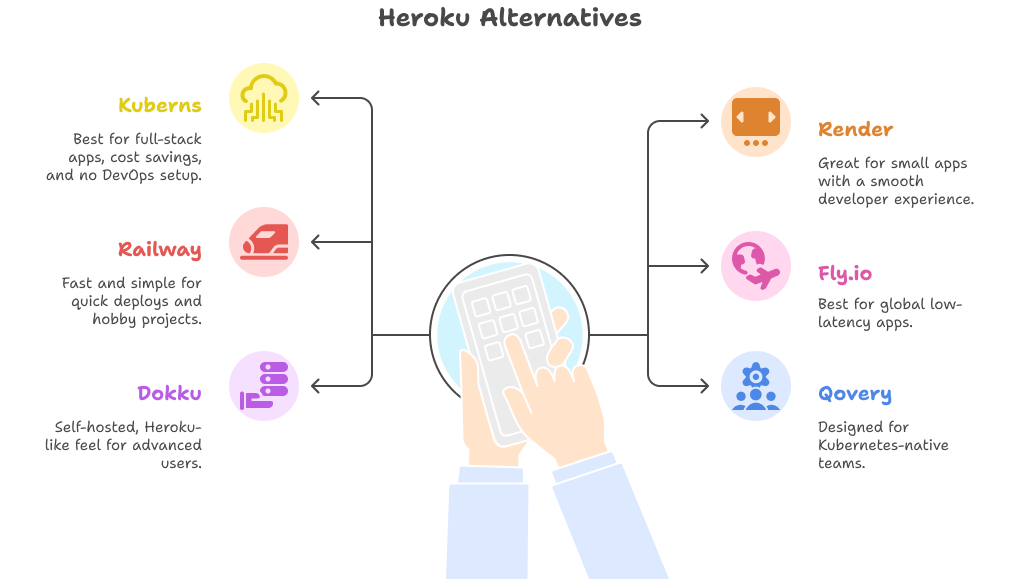
- Kuberns: Best for full-stack apps, cost savings, and no DevOps setup
- Render: Great for small apps with a smooth developer experience
- Railway: Fast and simple for quick deploys and hobby projects
- Fly.io: Best for global low-latency apps
- Dokku: Self-hosted, Heroku-like feel for advanced users
- Qovery: Designed for Kubernetes-native teams
Looking to deploy fast without spending hours on YAML, Docker, or infra config? Try Kuberns’ guided deployment flow and get your backend or full-stack app running in minutes.
What to Look for in a Heroku Alternative
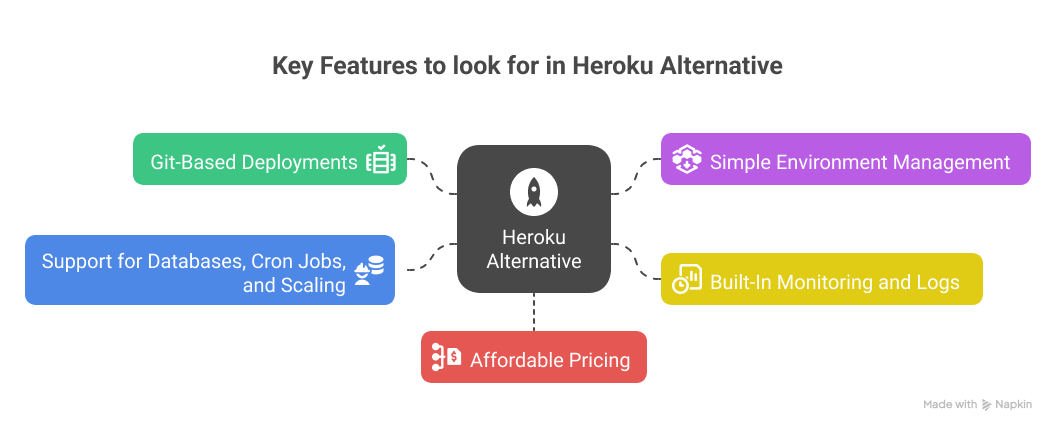 If you’re switching from Heroku, you likely value a platform that just works out of the box, but also grows with your application.
If you’re switching from Heroku, you likely value a platform that just works out of the box, but also grows with your application.
Here’s what you should expect from a true Heroku alternative:
- Git-based deployments: One of Heroku’s biggest appeals is its seamless Git integration. A strong alternative should support automatic builds and deploys whenever you push to your repo, without needing to write configuration files or scripts.
- Simple environment management: Managing environment variables, secrets, and runtime versions should be straightforward. Look for platforms that offer a visual dashboard or CLI tools to update these settings without restarting your app manually.
- Built-in monitoring and logs: You shouldn’t need to integrate third-party tools just to check logs or track CPU and memory usage. A solid Heroku alternative should offer real-time observability baked into the platform.
- Support for background jobs, cron tasks, and databases: Many modern apps rely on scheduled jobs or async workers. Whether it’s Redis queues, cron jobs, or Postgres databases, the alternative should support these without complex setup.
- Scalability with predictable pricing: Heroku’s cost structure becomes steep as usage grows. A good replacement should offer better cost control, especially for production workloads, with built-in auto-scaling and transparent billing.
A good Heroku alternative should not only support these features, but also remove the friction that Heroku users often run into when their apps scale.
Why Developers Are Moving Away from Heroku
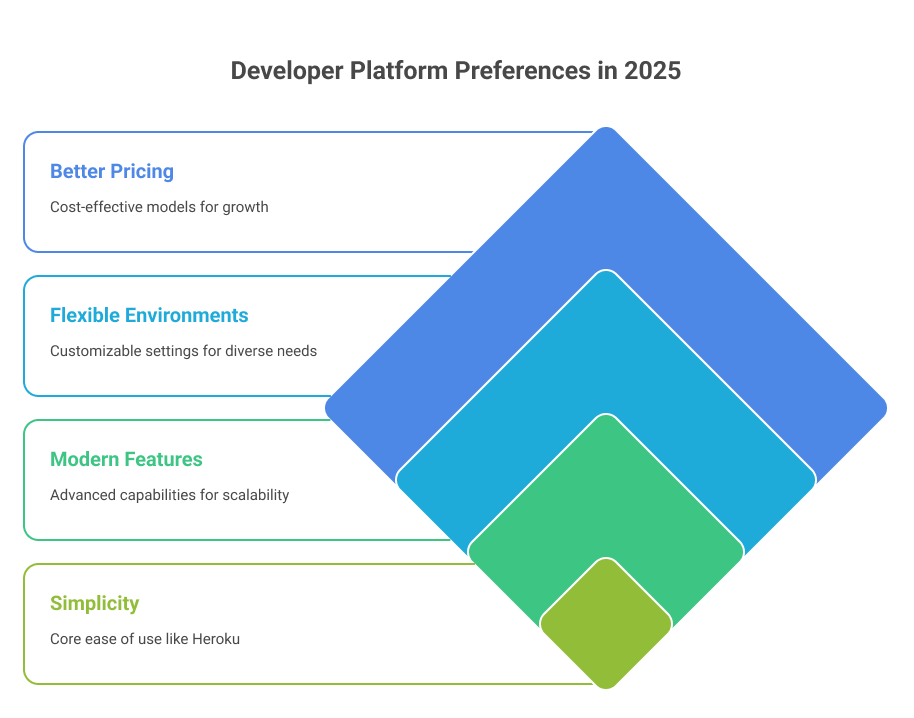 Heroku transformed how developers deployed applications by making infrastructure easy to manage. But as teams and workloads grew, several limitations started to appear:
Heroku transformed how developers deployed applications by making infrastructure easy to manage. But as teams and workloads grew, several limitations started to appear:
- Free tier limitations and rising costs: What started as an appealing free option quickly became expensive once apps moved into production. Many teams began seeing unexpected costs due to dyno limits and add-ons.
- Performance issues at scale: Heroku works well for small apps, but developers often experienced slow response times and resource bottlenecks as their applications grew or traffic spiked.
- Limited control over infrastructure: While abstraction is great for simplicity, Heroku offers little flexibility when you need to tweak performance settings, manage workloads more closely, or optimize for cost.
- Expensive add-ons and services: Add-ons like monitoring, databases, or Redis are easy to install, but their pricing scales quickly. Over time, these costs add up, especially for apps with background jobs, APIs, and multiple services.
By 2025, most developers are looking for platforms that keep Heroku’s simplicity but offer more control, better scalability, and modern cost optimization features. They want developer-first platforms with built-in scaling, more transparent pricing, and flexibility across frontend and backend deployments.
Best Heroku Alternatives for 2025
1. Kuberns
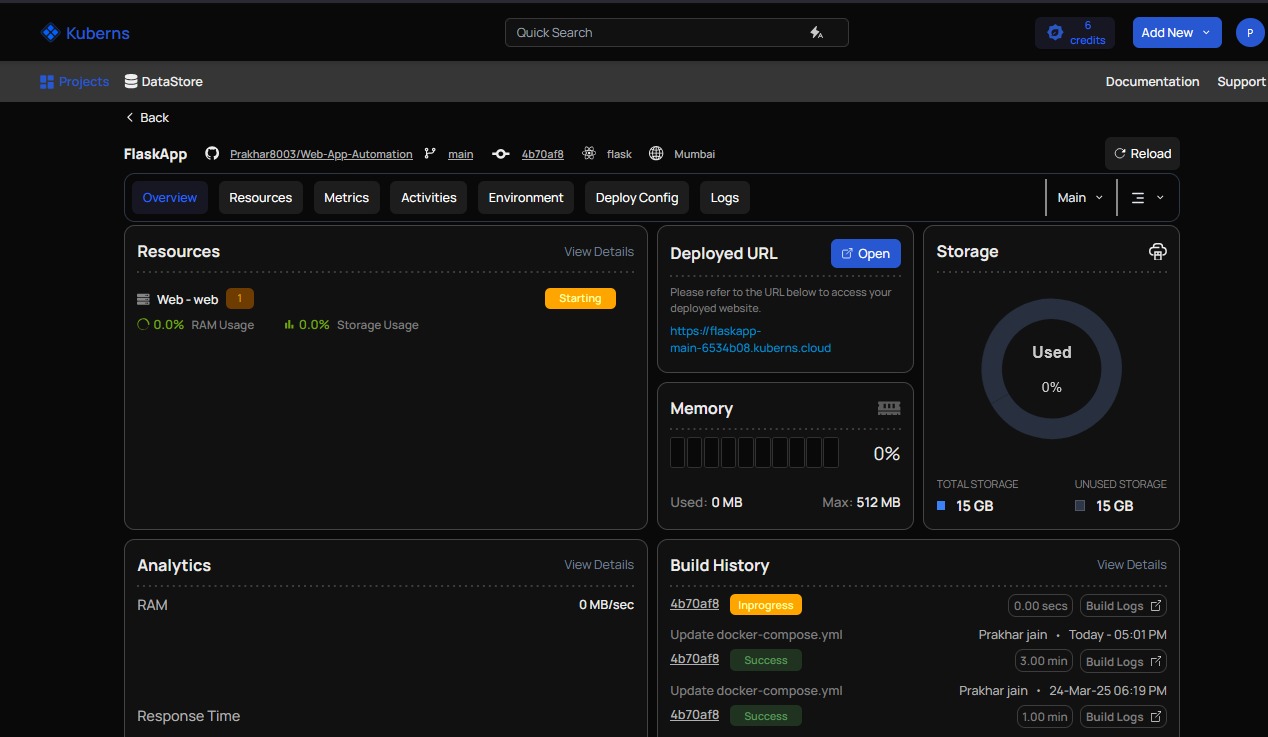 Best for startups, digital agencies, and full-stack development teams
Best for startups, digital agencies, and full-stack development teams
Kuberns is a modern platform-as-a-service (PaaS) that acts as a true Heroku alternative while going far beyond basic hosting. It replaces traditional CI/CD pipelines and DevOps workflows with a single smart platform that handles everything from code push to production deploy.
You can deploy full-stack applications using Node.js, Python, Flask, Django, and more without writing Dockerfiles, YAML files, or managing Kubernetes clusters. Just connect your GitHub or GitLab repository, and Kuberns automatically builds, configures, and deploys your app.
Key Features:
- ✅ Deploy frontend and backend apps from the same UI
- ✅ Built-in CI/CD automation with one-click rollback
- ✅ Auto-scaling and real-time performance monitoring
- ✅ Up to 40% savings on AWS bills, depending on usage
- ✅ Follow this guide to deploy your first app on Kuberns
Kuberns is designed for teams that want simplicity without sacrificing performance or visibility. It brings together the best parts of Heroku’s developer experience with smarter infrastructure management and more predictable pricing.
Want a side-by-side breakdown? See how Kuberns compares to Heroku in detail.
2. Render
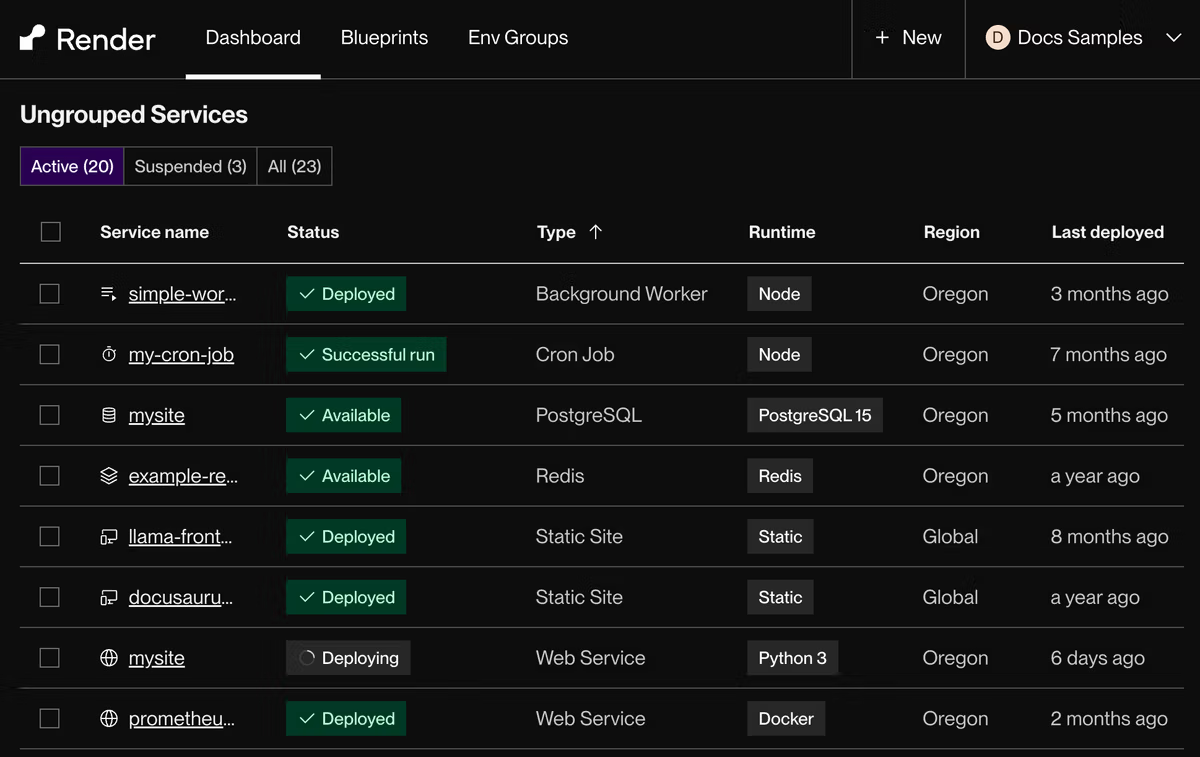 Best for developers looking for a Heroku-like experience with more flexibility
Best for developers looking for a Heroku-like experience with more flexibility
Render is often one of the first platforms developers try when moving away from Heroku. It offers a clean, intuitive interface and supports many of the same features such as background workers, scheduled cron jobs, and autoscaling for both web services and static sites. For small to medium apps, setup is fast and straightforward.
However, Render may not scale as affordably or flexibly as some teams require. While it works well out of the box, advanced infrastructure needs like custom networking or granular scaling controls can be harder to achieve.
Pros:
- Easy to use with a polished developer interface
- Quick setup for most app types
- Supports background workers and cron jobs
Cons:
- Pricing can increase quickly as your app scales
- Less control over infrastructure and environment customization
Looking for a more cost-effective Render alternative with AI-powered deployment and full-stack support? Explore how Kuberns compares
3. Railway
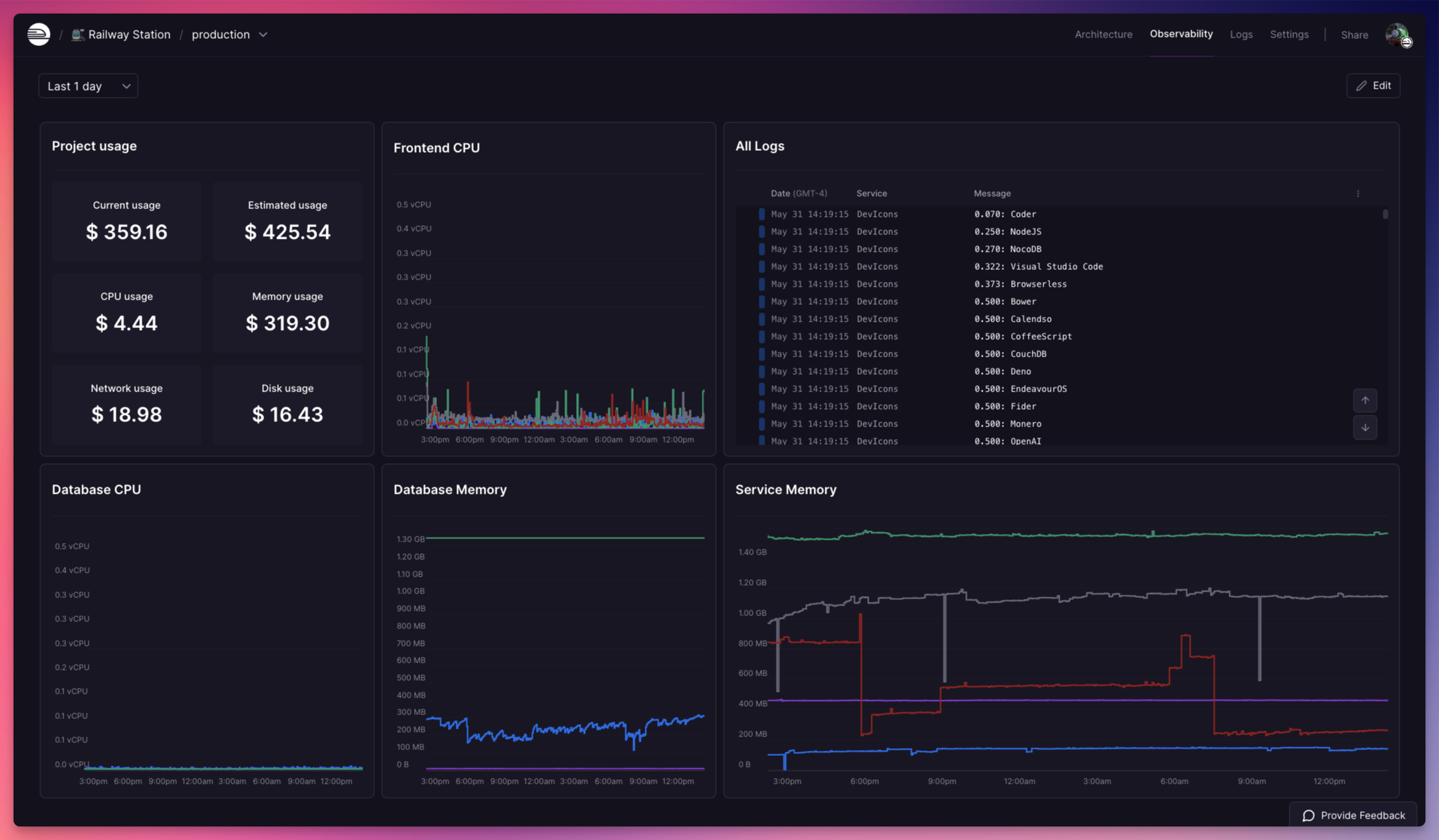 Best for prototypes, side projects, and hackathons
Best for prototypes, side projects, and hackathons
Railway is a popular choice for developers building small apps quickly. It automatically detects your tech stack and deploys your project with almost no configuration required. For early-stage MVPs, hackathons, or learning purposes, Railway offers one of the smoothest onboarding experiences available today.
That said, once your app grows beyond a prototype, Railway’s limitations start to show. It lacks deeper infrastructure controls, and its monitoring tools are basic compared to platforms built for production workloads. Teams looking to run complex services or fine-tune their environment might need to look elsewhere.
Pros:
- Beautiful and intuitive UI
- Stack auto-detection makes first deploys simple
- Great for solo developers and quick demos
Cons:
- Limited capabilities for scaling and production readiness
- Monitoring, logs, and infra customization are minimal
4. Fly.io
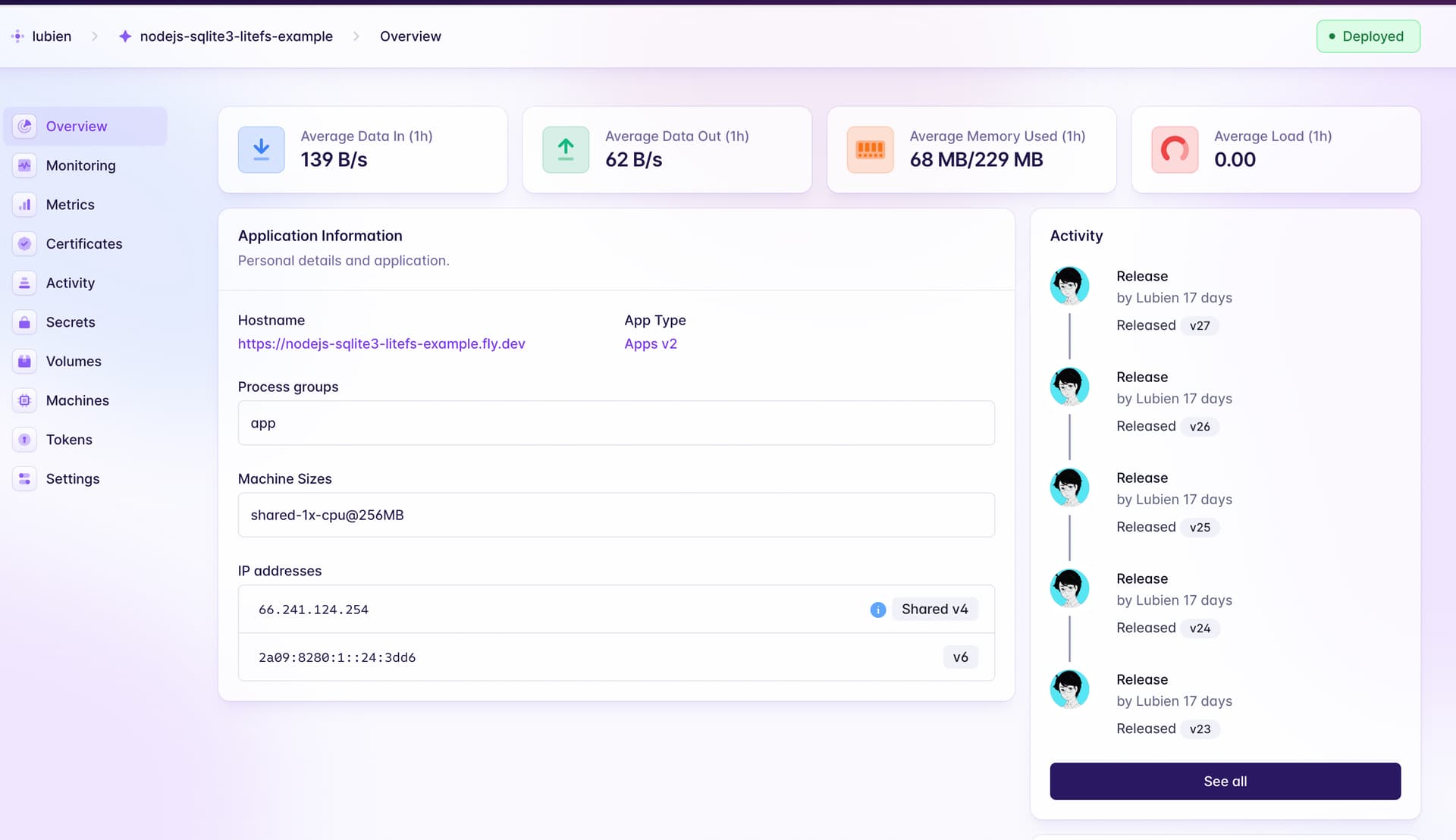 Best for distributed apps and teams needing global latency optimization
Best for distributed apps and teams needing global latency optimization
Fly.io is built for developers who want their applications to run close to end users. It deploys containers across a global network, allowing your app to live in multiple regions with minimal latency. Compared to traditional PaaS solutions, Fly.io offers more control over infrastructure, networking, and resource allocation.
However, this added flexibility comes with a learning curve. Setting up Fly.io requires understanding networking, volumes, and regions. It is better suited for teams with DevOps knowledge or developers looking to build globally distributed applications with precision.
Pros:
- Global deployment across edge locations
- More infrastructure control than most PaaS platforms
- Ideal for latency-sensitive apps
Cons:
- Requires more configuration and setup than Heroku or Render
- Steeper learning curve for new developers
5. Dokku
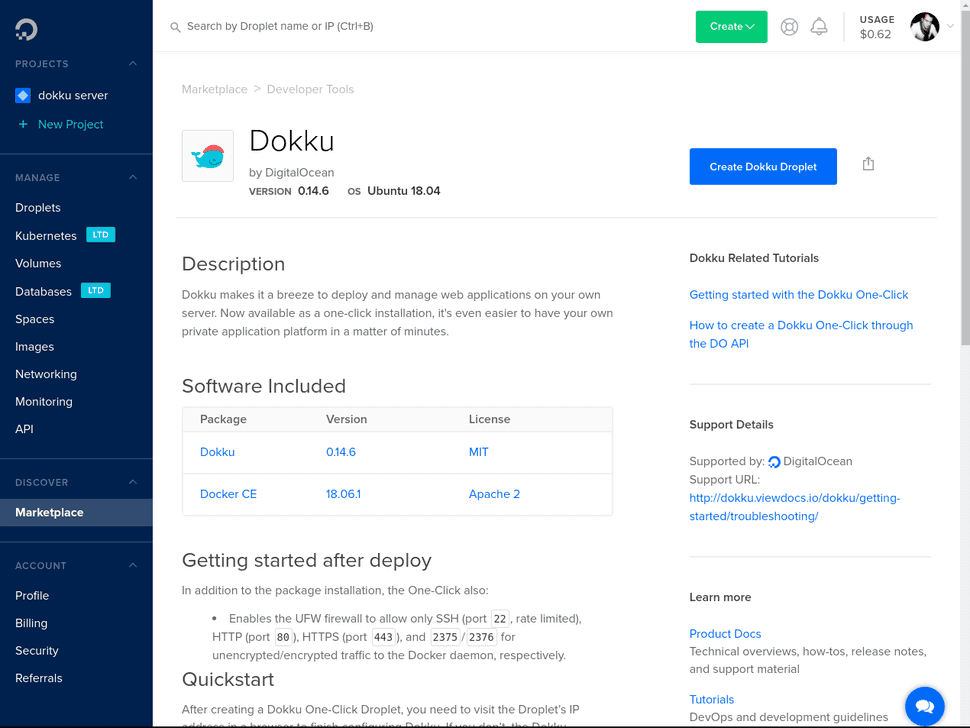 Best for developers who want full control through a self-hosted PaaS
Best for developers who want full control through a self-hosted PaaS
Dokku is an open-source platform that gives you Heroku-like deployment on your own server. It is ideal for developers who want full ownership of their infrastructure without relying on a third-party platform. Built on Docker, Dokku lets you deploy apps using Git, and you can extend its features through a plugin ecosystem.
It is a cost-effective choice in the long run since there are no monthly platform fees. However, you are responsible for everything from setup and updates to monitoring and scaling. Dokku is better suited for experienced developers or teams that are comfortable managing their own infrastructure.
Pros:
- Full control over your deployment stack
- One-time server cost instead of ongoing platform fees
- Large plugin ecosystem
Cons:
- Requires manual setup and server maintenance
- Less suitable for beginners or fast-paced teams
6. Qovery
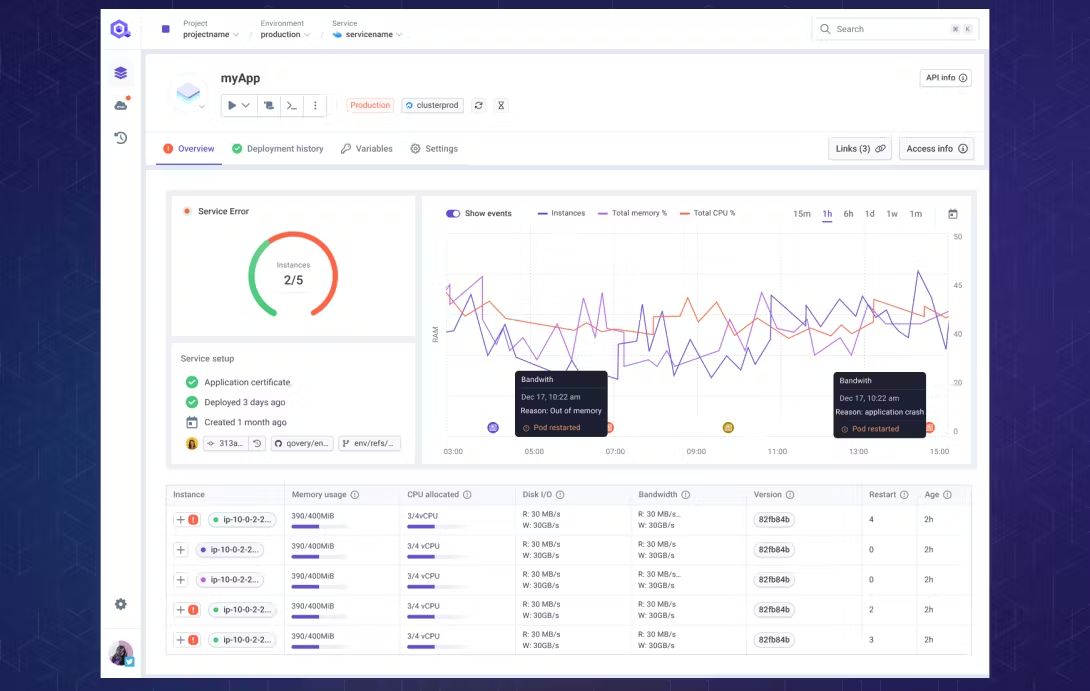 Best for teams that want Kubernetes power with a simpler interface
Best for teams that want Kubernetes power with a simpler interface
Qovery is a deployment platform built for teams that already work with Kubernetes but want a more user-friendly way to manage infrastructure. It sits on top of Kubernetes and automates much of the heavy lifting like provisioning environments, deploying code, and managing resources.
It works well for companies that need fine-grained control without the hassle of writing complex YAML files for every change. However, for smaller teams or solo developers, the learning curve and underlying Kubernetes complexity can still be a barrier.
Pros:
- Great fit for Kubernetes-native teams
- Simplifies infrastructure provisioning and management
- Supports multi-environment workflows and collaboration
Cons:
- Can still feel complex if you’re not already using Kubernetes
- May be overkill for small or early-stage projects
How to Choose the Right Heroku Alternative
Choosing the right platform depends on your team’s priorities and project goals. Here’s how to narrow it down:
- Want fast deployment with zero setup? is ideal for startups, agencies, and full-stack teams that want CI/CD, rollbacks, and auto-scaling in one place.
- Need full control and prefer to self-host? Dokku offers a Heroku-like experience that runs on your own infrastructure.
- Prioritize speed and edge performance? Fly.io helps you run apps close to your users with fine-grained infra control.
- Building early-stage or side projects? Railway makes deploying simple apps easy, with minimal configuration needed.
- Already using Kubernetes? Qovery helps reduce infrastructure overhead with a developer-friendly interface.
For a detailed breakdown of how these tools compare across team size, tech stack, pricing, and scaling, read our complete CI/CD tools comparison guide.
Key Takeaways
- Heroku alternatives have matured significantly in 2025.
- Platforms like Kuberns now offer CI/CD, monitoring, and scalable infrastructure in one.
- Your choice should depend on your team’s goals, skill level, and project type.
- You can save time and money by picking a platform that doesn’t require extra DevOps layers.
Try a Simpler Heroku Alternative
Still using Heroku? There’s a better way. Deploy your next app on Kuberns and ship in minutes with no YAML, no Docker, no DevOps required.
FAQ
Q: What is the best Heroku alternative for backend apps?
Kuberns is ideal for backend and full-stack apps. It auto-detects your framework and removes the need for Dockerfiles or infra setup.
Q: Is there a free Heroku alternative?
Railway and Render both offer free tiers, but costs can rise as your project grows. Kuberns offers predictable flat pricing and cost-saving infra optimizations.
Q: Can I deploy without using Docker or YAML?
Yes. Kuberns is one of the few platforms that removes that requirement entirely.
Q: Which alternative saves the most on AWS?
Kuberns helps teams save up to 40% on AWS bills through better resource management. Read more in this breakdown.